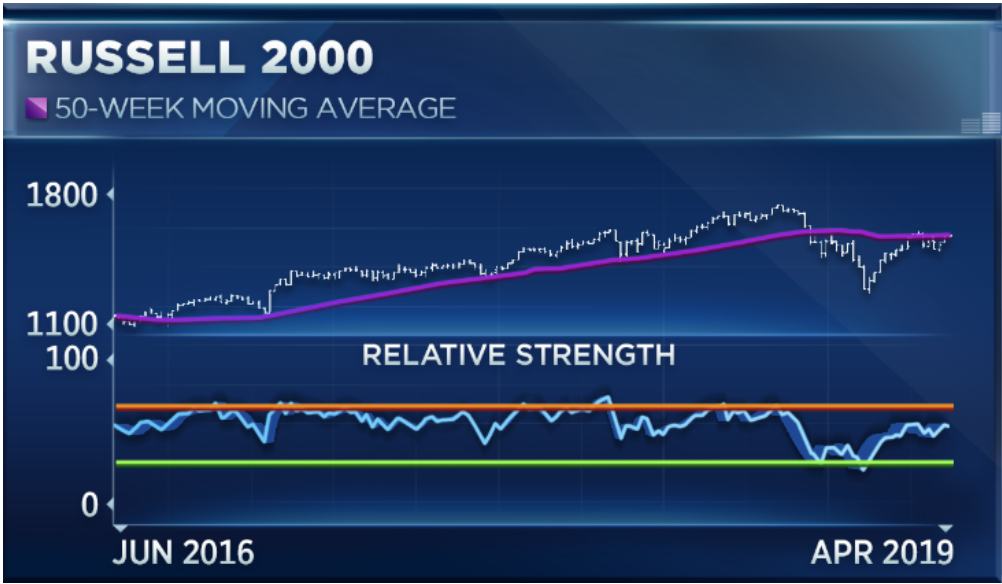If you want to know where the broader market is headed, this is the group of stocks to look at.
As far as market rallies go, the one since this past Christmas has been particularly notable for its rapid speed and relative strength. And that’s really about it, which doesn’t inspire much confidence.
Since December 24, stocks have rallied 23% – the fastest gain ever reported. However, this rally is happening without the help of some of the biggest sectors, finance and energy, and even typical barometers—including small caps and transports—are lagging.
But while the Russell 2000 small cap index is still down more than 10% from its high reached last September, one strategist says that its next move will be critical in terms of where the broader market will go over the next few months.
“The Russell is frequently a very good leading indicator for the rest of the stock market, and we certainly saw that last year when it rolled over much earlier than the rest of the market did,” Matt Maley, managing director and equity strategist at Miller Tabak, told CNBC on Tuesday.
What concerns Maley is the flattening seen in the Russell recently, and he said that the index is now pushing against its 50-week moving average that it broke below late last year.

While the 50-week moving average isn’t a common indicator, Maley says that it has been a reliable level of resistance and support in the last few years.
“Now, the 50-week moving average provided unbelievably solid support in 2016, 2017 and through much of 2018,” he said. “Old support becomes new resistance, and we’re bumping up right against that line right now.”
So, what happens if it breaks above this 50-week moving average? Maley says the index should “be able to move nicely. If it fails again, it may roll over in a decent way. So it’s going to be really important what this does because it has been, again, a good leading indicator, not only for [the] domestic economy, but for the broad market overall.”
Strategic Wealth Partners CEO Mark Tepper believes the Russell could be heading into a downturn, which could portend a difficult road ahead for the broader market.
“When we talk large caps versus small caps, the very first thing that we want to consider is what are the positive catalysts that could move stocks at this point?” Tepper said. “The biggest one for me that jumps out is trade, and trade doesn’t mean as much for small caps because they’re conducting most of their business right here in the U.S.”
The outcome of the trade talks between the U.S. and China could have a huge impact on large caps as more than 40% of the S&P 500’s revenues come from overseas.
“The trade catalyst will be great for the S&P, but it will have a minimal effect on small caps,” Tepper said. “Now, the next concern we have is debt. So, assuming we are in the eighth inning of this rally, we want to hold companies with less debt. Those are the companies that are really going to weather the storm much better in the next economic downturn, and small caps just have way more debt than the large caps do, so that makes us a bit uneasy.”
“Most small caps are high-yield companies with floating-rate debt, so as yields eventually go up, that debt service goes up, and that reeks of the interest-only adjustable-rate mortgage crisis that led to the subprime crisis,” Tepper noted. “So, I’d say at this stage of the game, the risk-reward setup looks much better in large caps.”